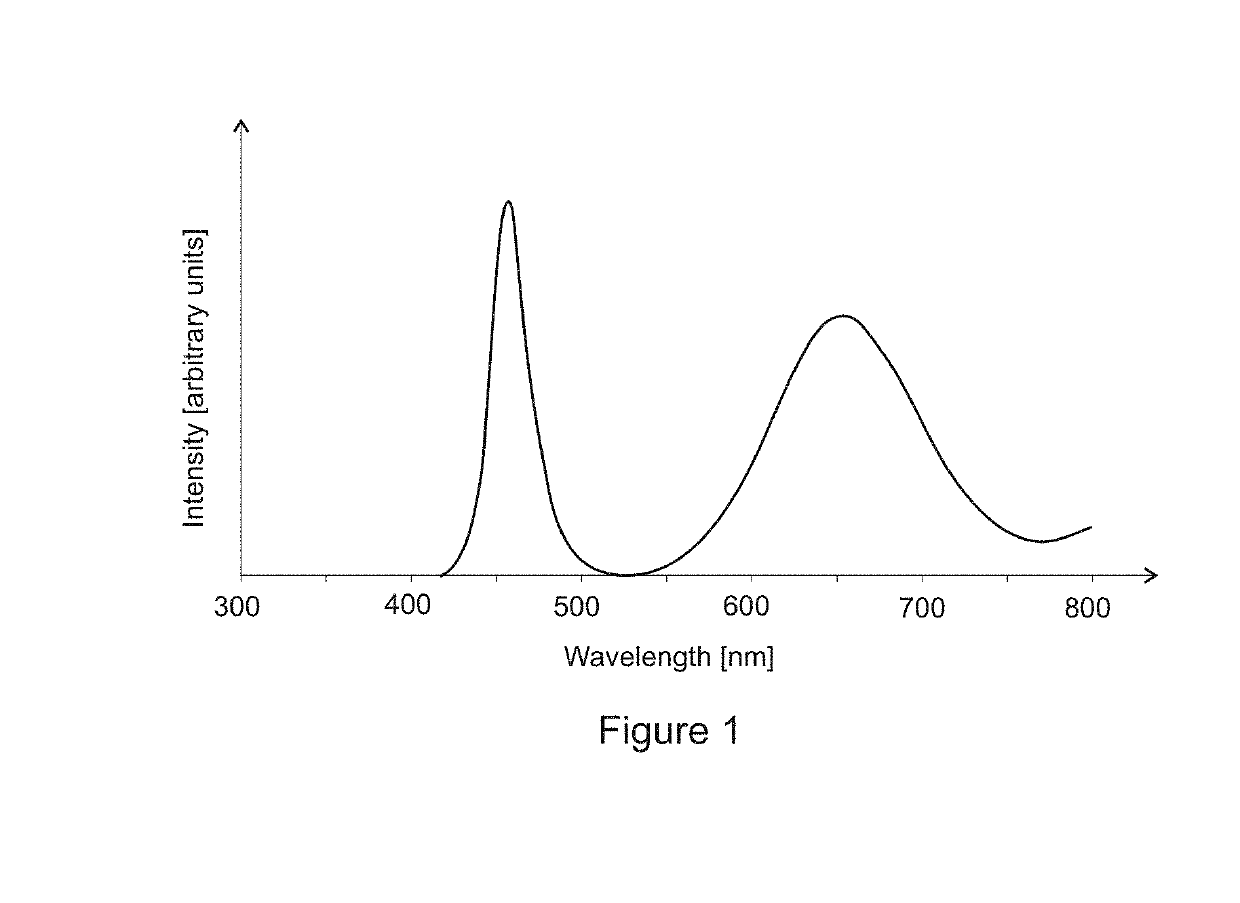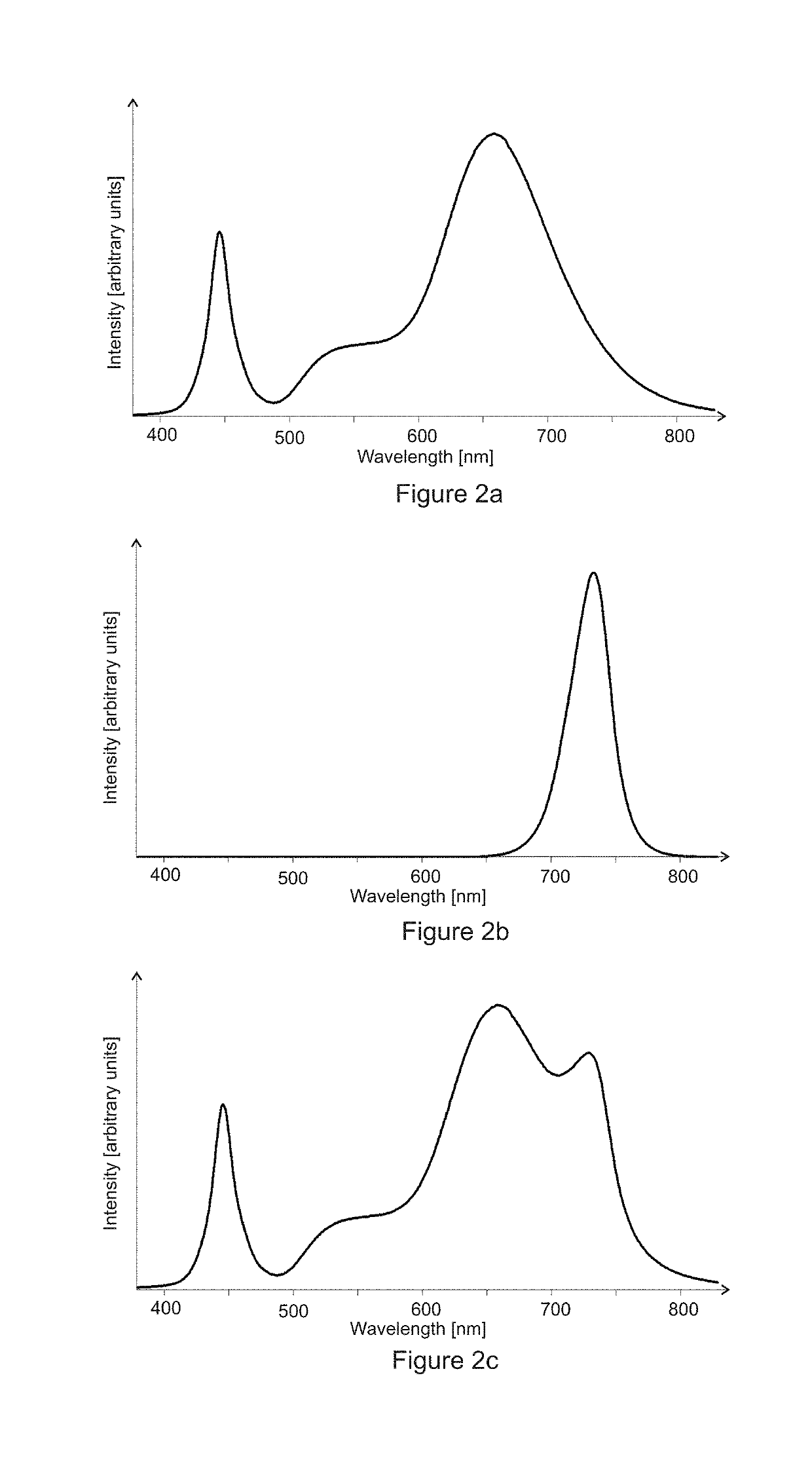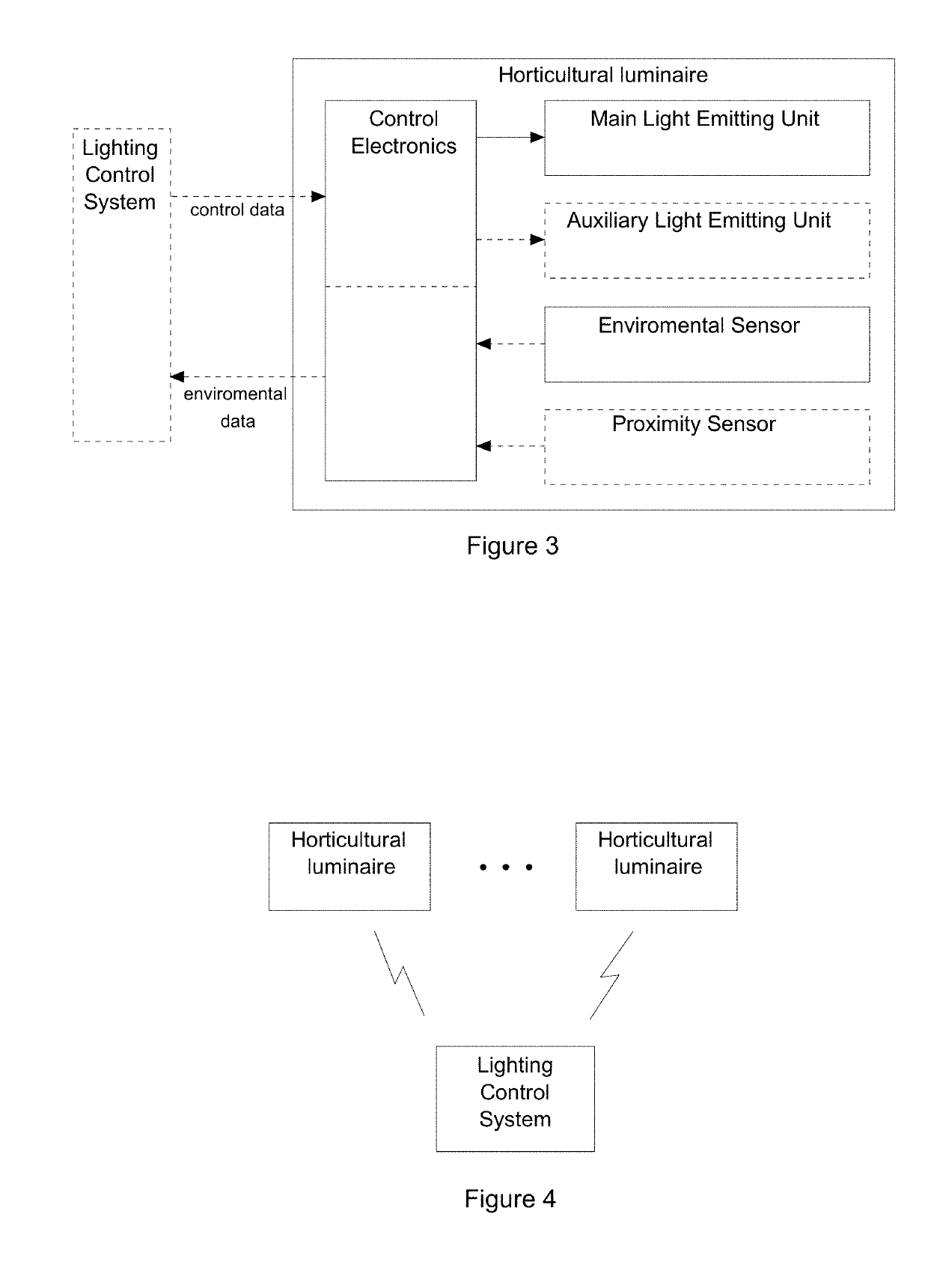Horticultural luminaire, horticultural lighting arrangement and method for controlling horticultural lighting arrangement
a technology for horticultural luminaires and lighting arrangements, applied in the direction of lighting and heating apparatus, light source combinations, semiconductor devices, etc., can solve the problems of cumbersome manual detection and recording of the position of sensors, cumbersome and error-prone tasks, etc., and achieve the effect of increasing the density of environmental monitoring data
- Summary
- Abstract
- Description
- Claims
- Application Information
AI Technical Summary
Benefits of technology
Problems solved by technology
Method used
Image
Examples
Embodiment Construction
[0014]The present disclosure describes a horticultural luminaire and a horticultural lighting arrangement comprising a plurality of luminaires. The present disclosure further describes a method for controlling a horticultural lighting arrangement.
[0015]In this context, a luminaire (or, interchangeably, a lighting fixture) is a device that is ready to be used as a light source, e.g. in a greenhouse or a growth room. A luminaire comprises a frame and one or more light emitting units attached to the frame. The luminaire may further comprise at least one power unit which acts as means for converting electric energy supplied to the luminaire into a suitable form of electric energy in order to be consumed by the light emitting units. The luminaire may also comprise a cooling device, such as passive cooling in the form of cooling fins. Further, in the context of the present disclosure, a horticultural lighting arrangement comprises a plurality of horticultural luminaires, and is intended f...
PUM
 Login to View More
Login to View More Abstract
Description
Claims
Application Information
 Login to View More
Login to View More - R&D
- Intellectual Property
- Life Sciences
- Materials
- Tech Scout
- Unparalleled Data Quality
- Higher Quality Content
- 60% Fewer Hallucinations
Browse by: Latest US Patents, China's latest patents, Technical Efficacy Thesaurus, Application Domain, Technology Topic, Popular Technical Reports.
© 2025 PatSnap. All rights reserved.Legal|Privacy policy|Modern Slavery Act Transparency Statement|Sitemap|About US| Contact US: help@patsnap.com



